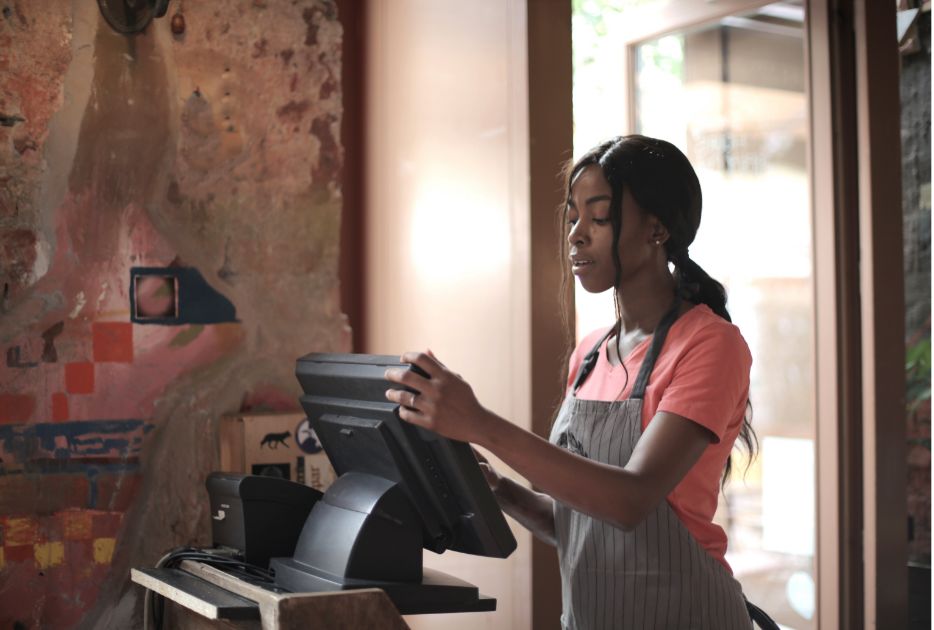I convinced my Gen Z kids to watch 'Dead Poets Society' and their angry reactions surprised me
Gen X and Gen Z apparently view "inspiring" very differently.

Robin Williams played inspiring English teacher John Keating in "Dead Poets Society."
As a Gen X parent of Gen Z teens and young adults, I'm used to cringing at things from 80s and 90s movies that haven't aged well. However, a beloved movie from my youth that I didn't expect to be problematic, "Dead Poets Society," sparked some unexpected negative responses in my kids, shining a spotlight on generational differences I didn't even know existed.
I probably watched "Dead Poets Society" a dozen or more times as a teen and young adult, always finding it aesthetically beautiful, tragically sad, and profoundly inspiring. That film was one of the reasons I decided to become an English teacher, inspired as I was by Robin Williams' portrayal of the passionately unconventional English teacher, John Keating.
The way Mr. Keating shared his love of beauty and poetry with a class of high school boys at a stuffy prep school, encouraging them to "seize the day" and "suck all the marrow out of life," hit me right in my idealistic youthful heart. And when those boys stood up on their desks for him at the end of the film, defying the headmaster who held their futures in his hands? What a moving moment of triumph and support.
My Gen Z kids, however, saw the ending differently. They loved the feel of the film, which I expected with its warm, cozy, comforting vibe (at least up until the last 20 minutes or so). They loved Mr. Keating, because how can you not? But when the movie ended, I was taken aback hearing "That was terrible!" and "Why would you traumatize me like that?" before they admitted, "But it was so gooood!"
- YouTubewww.youtube.com
The traumatize part I get—that film gets very heavy all of a sudden. But in discussing it further, I uncovered three main generational differences that impacted their "Dead Poets Society" viewing experience and what they took away from it.
1) Gen Z sees inspiring change through a systemic lens, not an individual one
The first thing my 20-year-old said when the credits rolled was, "What? That's terrible! Nothing changed! He got fired and the school is still run by a bunch of stodgy old white men forcing everyone to conform!" My immediate response was, "Yeah, but he changed those boys' individual lives, didn't he? He helped broaden their minds and see the world differently."
I realized that Gen X youth valued individuals going against the old, outdated system and doing their own thing, whereas Gen Z values the dismantling of the system itself. For Gen X, Mr. Keating and the boys taking a stand was inspiring, but the fact that it didn't actually change anything outside of their own individual experiences stuck like a needle in my Gen Z kids' craw.
2) Gen Z isn't accustomed to being blindsided by tragic storylines with no warning
To be fair, I did tell them there was "a sad part" before the movie started. But I'd forgotten how deeply devastating the last part of the movie was, so my daughter's "Why would you do that to me?!" was somewhat warranted. "I thought maybe a dog would die or something!" she said. No one really expected one of the main characters to die by suicide and the beloved teacher protagonist to be blamed for it, but I'd somehow minimized the tragedy of it all in my memory.
But also to be fair, Gen X never got any such warnings—we were just blindsided by tragic plot twists all the time. As kids, we cheered on Atreyu trying to save his horse from the swamp in "The Neverending Story" only to watch him drown. Adults showed us "Watership Down" thinking it would be a cute little animated film about bunnies. We were slapped in the face by the tragic child death in "My Girl," which was marketed as a sweet coming of age movie.
Gen Z was raised in the era of trigger warnings and trauma-informed practices, while Gen X kids watched a teacher die on live TV in our classrooms with zero follow-up on how we were processing it. Those differences became apparent real quick at the end of this movie.
3) Gen Z fixates on boundary-crossing behavior that Gen X overlooked
The other reaction I wasn't expecting was the utter disdain my girls showed for Knox Overstreet, the sweet-but-over-eager character who fell for the football player's cheerleader girlfriend. His boundary-crossing attempts to woo her were always cringe, but for Gen X, cringe behavior in the name of love was generally either overlooked, tolerated, or sometimes even celebrated. (Standing on a girl's lawn in the middle of the night holding a full-volume stereo over your head was peak romance for Gen X, remember.) For Gen Z, the only thing worse than cringe is predatory behavior, which Knox's obsessiveness and pushiness could be seen as. My young Gen X lens saw him and said, "That's a bit much, dude. Take it down a notch or three." My Gen Z daughters' lens said, "That guy's a creepo. She needs to run far the other way."
On one hand, I was proud of them for recognizing red flag behaviors. On the other hand, I saw how little room there is for nuance in their perceptions, which was…interesting.
My Gen Z kids' reactions aren't wrong; they're just different than mine were at their age. We're usually on the same page, so seeing them have a drastically different reaction to something I loved at their age was really something. Now I'm wondering what other favorite movies from my youth I should show them to see if they view those differently as well—hopefully without them feeling traumatized by the experience.
This article originally appeared in January
- Comedian's viral video perfectly nails how each generation arrives at someone's house ›
- Gen X advice for Gen Z: Woman shares the things she wishes 'somebody told me in my twenties’ ›
- Gen Zers asked Gen Xers to share the things they don't realize will affect their life ›
- Millennials nearing 40 share their 21 biggest mistakes - Upworthy ›
- Woman without kids cancels trip with mom friends because she's sick of hearing about babies - Upworthy ›
- Millennials reveal their 'retirement plans' with perfect dark humor - Upworthy ›
- Company shares the truly lough out loud 'out-of-office' messages from its Gen Z workers - Upworthy ›
- Millennial shares her spot on theory about why Gen Z 'romanticizes' the early 2010s - Upworthy ›
- Gen Z hilariously tries to explain humor to older people - Upworthy ›
- Gen Z is flocking to more traditional jobs for good reason - Upworthy ›
- Enlightened boomer explains why millennials are heroes - Upworthy ›
- 'Adults' are super confused by these 15 things the younger generations do - Upworthy ›
- Gen Xers prove they still got the moves in wholesome 'dance like it's the 80s' trend - Upworthy ›
- 'Yo dawg…you need an ambulance.' Woman shares funny first encounter with a Gen Z doctor. - Upworthy ›
- Born between 1954 and 1965? You're not a Boomer. You're 'Gen Jones.' - Upworthy ›
- Gen Z is more similar to Boomers than Millennials for these 14 reasons - Upworthy ›
- Gen Z and Millennials discuss the major differences between them - Upworthy ›
- Boomers and Gen Xers wish young people could experience these 7 things they grew up with - Upworthy ›
- Retired elementary school teacher shares biggest parenting mistake she saw over her long career - Upworthy ›
- Comedian perfectly sums up everything you need to know about Gen X in three definitive words - Upworthy ›
- Gen X reveals their retirement plan, it's not found in financial news - Upworthy ›
- Gen Zer tries to dub Gen X 'the worst generation.' Then a millennial steps in. - Upworthy ›
- Dad shares the hilarious conversations he has with 5-year-old daughter and folks are cracking up - Upworthy ›
- Millennials discuss if their generation has 3 micro-generations - Upworthy ›
- Costume designer breaks down why modern movie costumes 'suck' - Upworthy ›



 These matching bunny ears though.
These matching bunny ears though.  Many adult twins regret that their names are so closely linked together.
Many adult twins regret that their names are so closely linked together.  A record player plays a record.
A record player plays a record.  9 months is a very long time to be aboard a boat, even a giant cruise ship. Photo by
9 months is a very long time to be aboard a boat, even a giant cruise ship. Photo by  Pro tip: Don't ask the band on board to play "My Heart Will Go On" by Celine Dion
Pro tip: Don't ask the band on board to play "My Heart Will Go On" by Celine Dion  American portion sizes are colossal.Canva Photos
American portion sizes are colossal.Canva Photos American public restrooms aren't very private.Canva Photos
American public restrooms aren't very private.Canva Photos Cashiers in America stand all shift long.Canva Photos
Cashiers in America stand all shift long.Canva Photos America loves the Pledge of Allegiance.Canva Photos.
America loves the Pledge of Allegiance.Canva Photos. Cosmetic surgeries on pets are...a choice.Canva Photos.
Cosmetic surgeries on pets are...a choice.Canva Photos. America loves extra sugar in savory foods.Canva Photos.
America loves extra sugar in savory foods.Canva Photos. Earth Wind And Fire GIF by Death Wish Coffee
Earth Wind And Fire GIF by Death Wish Coffee  September 21 GIF by Earth, Wind & Fire
September 21 GIF by Earth, Wind & Fire  Many cockatiels love to dance.
Many cockatiels love to dance.